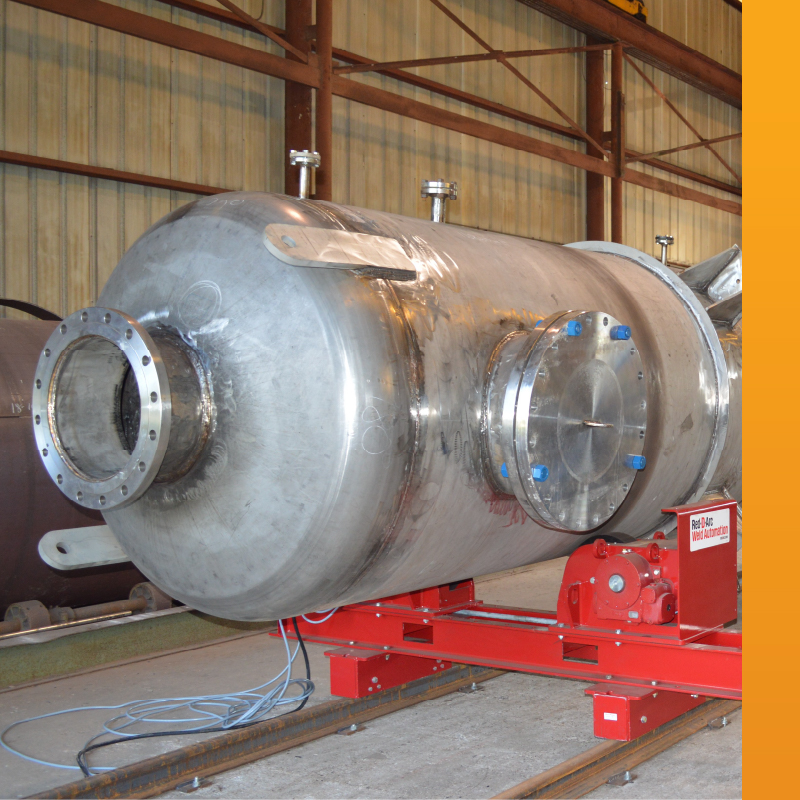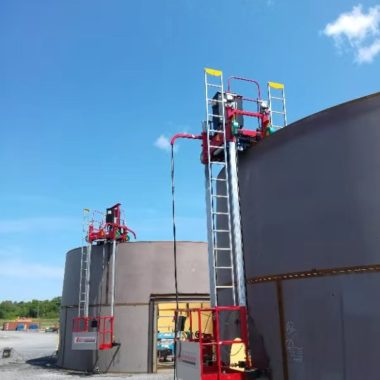Quality control at Every Seam: Tank Welding Inspection Services Revealed
Wiki Article
Comprehensive Tank Welding Assessment for Industrial Safety and Regulatory Compliance
Making sure commercial safety and regulative conformity within the realm of tank welding assessments is a critical aspect of preserving functional honesty and mitigating potential dangers. The careful exam of weld quality, material thickness, and general container problem is paramount in protecting versus architectural failings and ecological hazards. By delving into the ins and outs of thorough container welding inspections, a deeper understanding emerges of the multifaceted approaches employed to maintain industry requirements and maintain safety and security methods.Value of Storage Tank Welding Evaluations
Carrying out thorough and regular storage tank welding inspections is crucial in making certain the architectural honesty, safety and security requirements, and regulative compliance of industrial containers. These examinations play a critical duty in recognizing any type of potential defects or weak points in the bonded joints that might compromise the overall honesty of the storage tank. By discovering these issues early on, firms can take positive steps to address them without delay, consequently avoiding costly repair services, environmental contamination, or, in the worst-case scenario, tragic failures.Normal storage tank welding inspections additionally assist companies conform with industry laws and requirements stated by authorities such as the American Petroleum Institute (API) or Occupational Safety and Health And Wellness Administration (OSHA) Failing to meet these demands can result in penalties, legal consequences, and even the suspension of procedures. Tank Welding Inspection Service. Therefore, buying comprehensive storage tank welding inspections not just safeguards the health of workers and the surrounding setting but additionally protects the firm's reputation and lower line in the long run
Secret Elements of Weld Quality Evaluation
Ensuring the high quality of welds entails a precise examination of key elements that add to the architectural integrity and dependability of commercial containers. One essential facet of weld top quality assessment is the evaluation of weld infiltration. Correct infiltration is vital as not enough infiltration can lead to weld problems and jeopardize the stamina of the joint. In addition, the weld's account have to be analyzed to make sure that it satisfies the specified needs in terms of size and form. The visibility of any suspensions, such as cracks, porosity, or insufficient combination, have to be thoroughly evaluated as these can weaken the weld and increase the possibility of failure. Additionally, the general weld appearance is also an essential component of quality assessment, as it can indicate the visibility of issues or incongruities in the welding procedure. By comprehensively reviewing these crucial parts, assessors can aid assure that welded joints satisfy the required requirements for security and regulative compliance in industrial storage tank construction.
Product Thickness Examination Techniques
Exact measurement of material thickness is crucial in ensuring the structural stability and safety and security of bonded tanks. Numerous non-destructive testing (NDT) methods are utilized for evaluating product thickness, including ultrasonic screening, radiographic screening, and magnetic particle evaluation. These strategies not only help in evaluating the thickness of products however also help in identifying any kind of possible flaws or gaps that could endanger the weld high quality and overall honesty of the storage tank structure.Container Condition Examination Approaches
A vital aspect in keeping the integrity and safety and security of welded tanks is the detailed evaluation of tank conditions via trustworthy evaluation approaches. Tank problem evaluation approaches play an essential duty in guaranteeing the architectural stability and functional efficiency of industrial containers. Visual assessment is a primary technique made use of to evaluate the outside problem of tanks, trying to find signs of rust, leakages, or physical damages. Additionally, non-destructive screening strategies such as ultrasonic testing and radiographic testing are utilized to detect interior imperfections, weld defects, and material destruction that might compromise the storage tank's efficiency. Tank Welding Inspection Service. In addition, magnetic particle evaluation can determine surface area splits and defects that are not visible to the naked eye. These assessment approaches provide valuable insights into the general health and wellness of the container, making it possible for very early detection of potential issues and helping with timely maintenance or repair services to make sure conformity with safety and security laws and sector criteria. Normal inspections using these methods are essential for see avoiding devastating failures and guaranteeing the long-term reliability of bonded containers.Advantages of Regular Examination Practices
Routine inspection methods not just guard against prospective issues spotted throughout container condition examination approaches yet also work as proactive actions in visit their website maintaining the architectural integrity and functional performance of welded containers. By conducting regular evaluations, industrial centers can recognize any indications of corrosion, cracks, leaks, or other defects in the tank welds quickly. This very early detection allows prompt repair services or upkeep treatments, avoiding little problems from intensifying right into larger, more costly troubles that could endanger security or bring about governing non-compliance.
Final Thought

To conclude, thorough storage tank welding assessments are essential for making certain commercial security and governing conformity. By carrying out normal inspections and analyses of weld top quality, material thickness, and tank problem, organizations can determine possible risks and protect against pricey mishaps. Implementing an aggressive approach to examination practices can aid preserve the architectural stability of containers, protect the setting, and make sure the safety Learn More Here of employees and the bordering neighborhood.

Report this wiki page